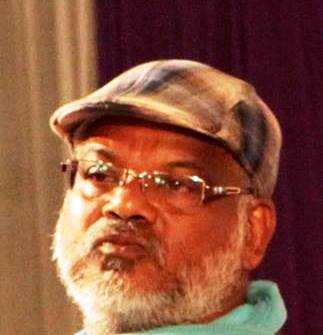Although the present tour has been planned before, the media and public attention will shift to PM’s movement, simply because he is the “mover and shaker” of Indian politics as well as of drawing international attention for his ‘politics of conviction’
 Dr. D.K. Giri I INFA Service
Dr. D.K. Giri I INFA Service

Prime Minister Narendra Modi will be visiting Japan, Papua New Guinea and Australia from May 19 to 24. In Japan, he will be participating in the economically powerful G-7 meeting, in Australia he was to join the Quad, which apparently has been put off by Australian Prime Minister Anthony Albanese due to non-availability of the American President Joe Biden. He has been caught up in his country’s domestic economic downturn.
Modi will still go to Sydney to address a huge 20,000 strong pre-booked gathering, induce the Australians to invest in India and talk of enhancing bilateralism.
A month ago, the whole country was politically focused on the elections in Karnataka. Given our political culture, elections overtake every other priority including foreign policy, or developments beyond the borders. Now that elections are over, until the next one, the government will refocus on governance and world politics.
Although the present tour has been planned before, the media and public attention will shift to PM’s movement, simply because he is the “mover and shaker” of Indian politics as well as of drawing international attention for his ‘politics of conviction.’
Before I touch on the topic, I wish to propound this week, let me also recall the SCO Summit held earlier this month on 4 & 5 May. There was not much to write home about as the SCO comprises disharmonious members. In a well-articulated article, the ‘Myth and reality of SCO’ was thoroughly discussed.
Although Chinese were expectedly quieter in their utterances, Russians were spewing venom on Americans for plunging them into a proxy war in Ukraine, and Indians and Pakistanis were as usual calling out each other on Kashmir, terrorism, etc. Could SCO achieve any tangible outcome except going through the diplomatic drills?
In the beginning of the year, or from rather last December, there was some euphoria about India having three presidentships – one in the General Assembly, the SCO and the G-20, only the last is in process where India could make some mark as the natural leader of the Group. New Delhi has a chance to showcase and lead in its politics of democracy, multiculturalism, universalism, synthesis of multiple contrasting perspectives, and so on.
The slogan set out by New Delhi is ‘VasudhaivaKutumbakam’, ‘the world is a family’. I have written several articles in this column extolling the ingenuity of this slogan and thrown up quite a few concepts to introduce such as Restoring the Global Ethic, Unique Indian Perspectives, Advocating a Balance, Freedom of Religion or Belief (R-20 & G-20), etc.
In this piece, let us talk about another Indian spiritual principle “Sarvebhabantusukhino, sarvesantuniramaya, sarvebhadranipashyantu, ma kashchitdukhbhagbhabet.” (May all be happy, may all be free from infirmities (illness), may all see good, and may none partake suffering). As our Prime Minister claimed India is the mother of democracy from ancient times, one could similarly easily claim India could inspire the building of the welfare state where everyone is relatively happy and secure.
It is not an ideological issue, it is humanism that seeks well-being for all. Although BritishLabour Party is credited with laying the foundation of a welfare state, it was a Liberal Member of Parliament William Beveridge who provided the basis by charting out a welfare state system covering people’s needs from cradle-to-the-grave. In his famous Report on Social Insurance and Allied Services, published in 1942, Beveridge underlined the imperative need to establish a minimum standard of living, below which no one should be allowed to fall.
In India, quite a few political parties have introduced welfare measures that could contribute to constituting a welfare state, but they are being done as seducing the electorate, promoting competitive populism and so on. The Central Government has initiated a plethora of schemes for the poor – opening up the bank accounts, setting up toilets and sanitation facilities, cooking gas provision, electricity subsidies, and so on. Again, they are being introduced piecemeal, short of a robust welfare state structure.
It is in order that we look at some of the popular welfare state systems, understand the basic principles and discuss the possibility of its universal application in G-20 meetings. Europe has been considered the cradle of modern welfare state system. In the closing decades of the 19th century the German statesman Otto von Bismarckintroduced the concept in his country. His reasons for doing so were mixed, yet the concept gained currency since. The present welfare
system in Germany is a post-war construction. In France, the welfare system was influenced by the famous watchwords of the French Revolution – equality, liberty and solidarity. In USA the welfare state programme crept into the governance system after Franklin D. Roosevelt’s New Deal Reforms in 1930s. Roosevelt’s ‘four freedoms’ including the freedom of want provided the foundation.
However, notably, the most outstanding model of modern welfare system is Sweden, followed by other Scandinavian countries like Demark, Norway and Finland. The Scandinavian countries together represent a regional welfare feature and ethos. They receive worldwide attention and stand out as inspiring models for others to emulate.
India, the largest democracy and now the most populous country in the world, began late. As it got independence in 1947, the welfare state had taken shape in Europe. At any rate, Indian Constitution makers incorporated many provisions to make it a welfare state, in the ‘Preamble’ of the Constitution and the Directive Principles of State Policy. Furthermore, Articles 38, 39, and 41 refer to providing basic welfare, livelihood, right to work, gainful employment, compulsory education upto the age of 14 (Article 45), and so on.
But the growth of the welfare state was stunted largely due to neglect. Experts point out that the welfare state received a serious setback during the finance ministership of Manmohan Singh, who played up to the agenda of the World Bank. The globalisation strategy in the name of re-structuring eroded the principles of equality, solidarity and welfarism by using liberalisation, privatisation and marketisation. This could be debatable as others argue that China largely benefitted from opening its economy.
I would like to rather sum up my proposition by laying out the principles of welfarism and underlining how these are critical for universal humanism. How to download these principles into practice may differ contextually. First, a welfare system is state-centric, a democratic state leading the partnership with all other sectors of society. Second, levelling the different strata of the society. The state should level-up the lower strata by incentives and level-down the upper one by taxation,using the twin principles of relative equality and distributive justice.
Third, the prominence of the public sector should be accepted along with participation of private sector. Fourth, a welfare system promotes social integration by creating common benefactors and enhancing social solidarity. Fifth, it provides a conflict prevention mechanism. When social security of all citizens isestablished, there is less risk of conflict, as, at the end of the day, conflicts are caused mainly by economic disparities.
Finally, the principle of welfarism naturally entails a global vision and world solidarity transcending all cultures and continents. It is a principle India should shout about as it is anchored in her spiritual tradition. —INFA
(The writer is Secretary General, Association for Democratic Socialism)



